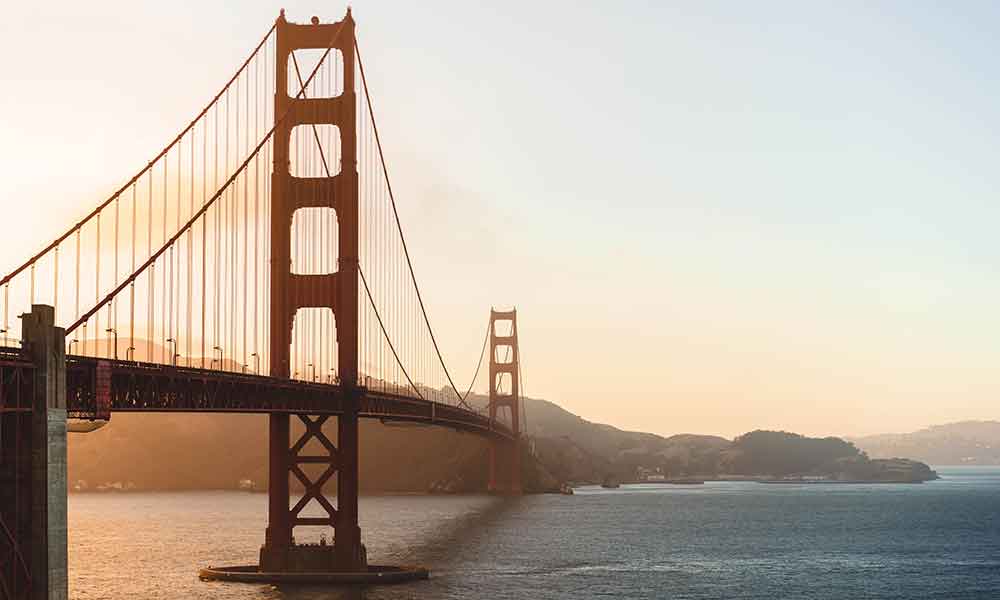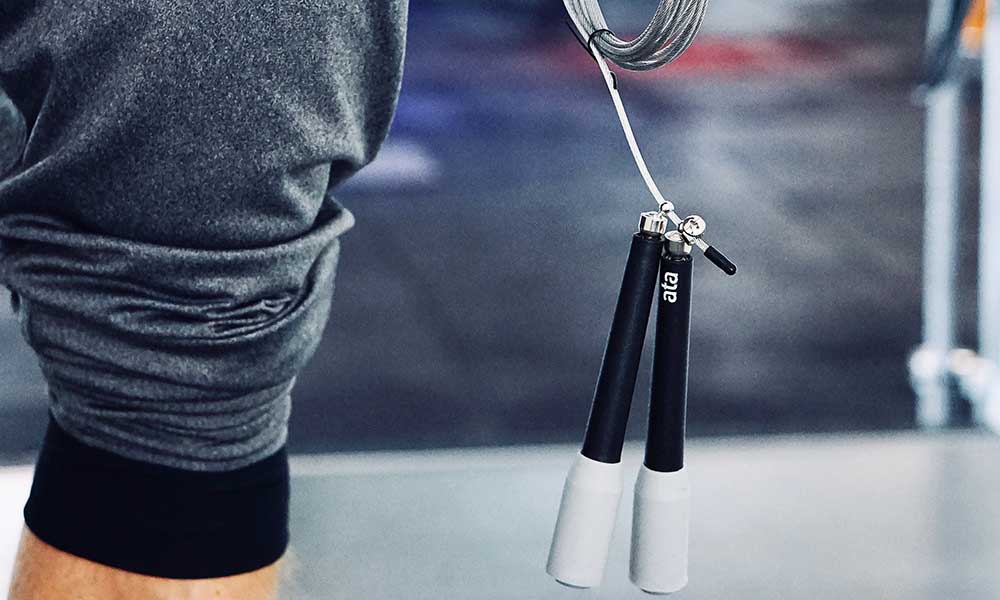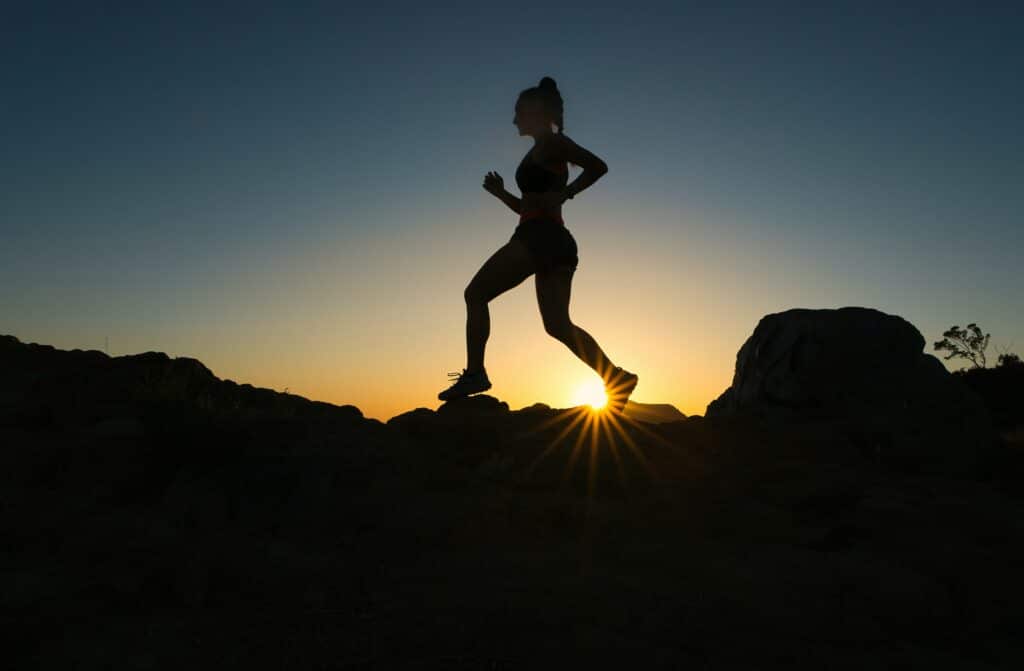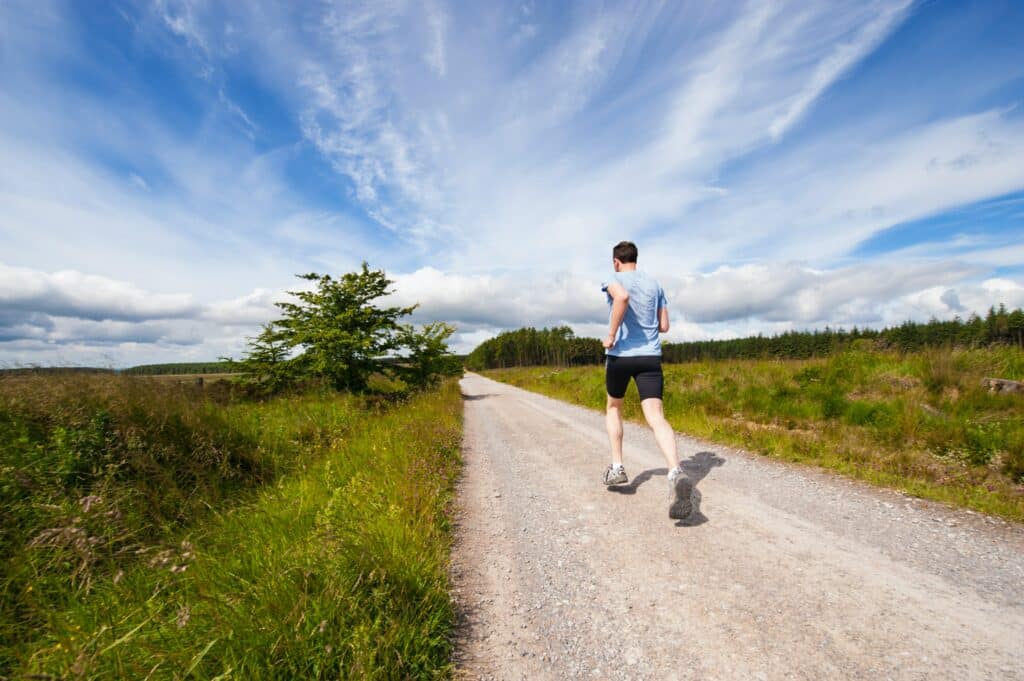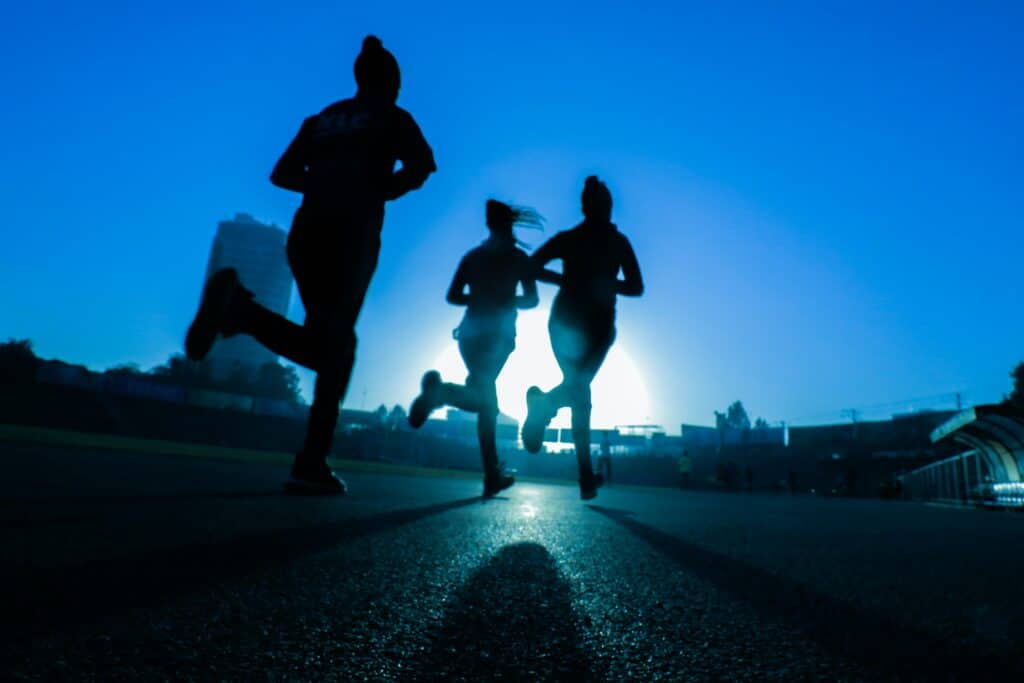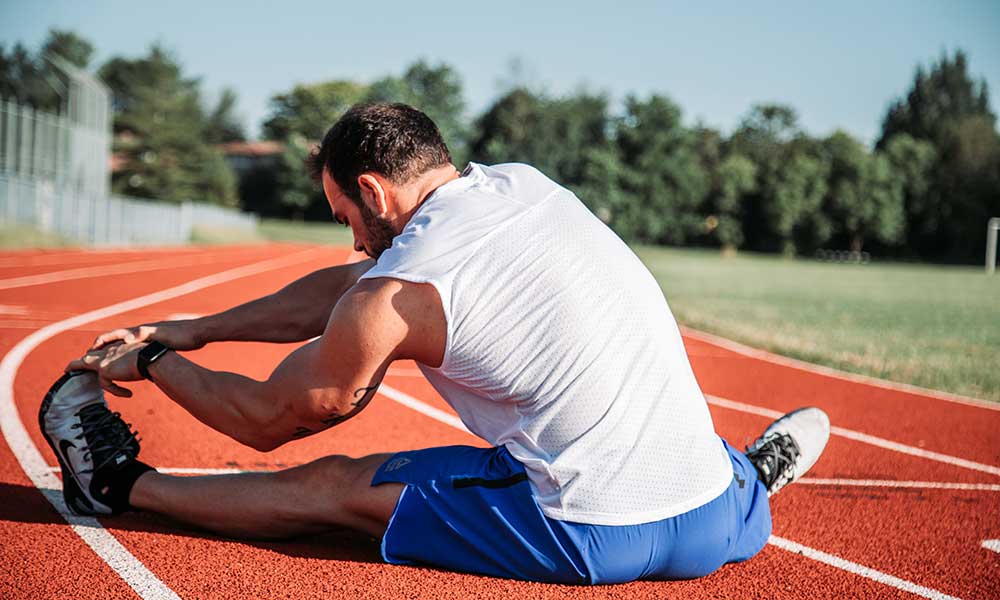In the last few years, the world has opened up to many of us. With the rising ability to work remotely, we have the option to choose a place to live that is inspiring to us and allows us to pursue our hobbies outside of work. No longer do you have to wait for the weekend to get out to the mountains or the sea, it can be your everyday reality.
For trail runners, this is especially exciting news. One of the best ways to start or end your day is to strap on your trail-running shoes and hit the trails to get your head in the right space.
We’ve compiled a list of eight of the best places to live for trail runners based on proximity to trails and the quality of trails that are available for running. Maybe moving to one of these amazing places isn’t a reality for you at the moment, but you can still use this as a guide to plan your next trail running vacation.
And if you don’t have the ability to move to one of these places right now, many communities have trails and are looking to become more pedestrian friendly. If you don’t know what trails you have nearby, call up your local visitor’s center or city hall to learn what is around you that you may have never heard of.
Marin County, CA
Located just northwest of San Francisco, Marin County is a beautiful part of California with access to hundreds of great trails. Much of the running can be done at, or near, sea level which is nice on the lungs. And while you may be running in fog or rain at times, you can be out on the trails all year long as it rarely snows here.
Mount Tamalpais State Park
Rising above the heart of Marin County near Mill Valley is Mount Tamalpais, fondly shortened to ‘Mount Tam’ by locals. This diverse park is easily accessible and boasts amazing trails for hiking and running, as well as sweeping views of the ocean and the surrounding terrain. This beautiful area offers running from sea level all the way to 2571 feet at its peak. Trail runners will find a nearly unlimited source of paths and trails to explore here with all different kinds of challenges and difficulty.
Watershed District
The Mount Tamalpais watershed district offers stunning beauty with less people than the state park. Offering trail runs of all different levels and inclines that run through fir and redwood forests, you can find a run to fit your training goals. You can even run to Cataract Falls and touch the waterfall before heading back to the trailhead.
Marin Headlands
This beautiful area is the coastal land just north of San Francisco after crossing the Golden Gate Bridge. There are tons of trails with different degrees of difficulty, all of which are incredibly beautiful. Definitely check out the Coastal Trail with Rodeo Beach on one end and Muir Beach on the other.
Salt Lake City, UT
While located in a flat valley, the nearby Wasatch Mountains are what puts Salt Lake City on our list. It is home to several elite runners due to the richness of the training grounds nearby. You may have to hop in your car to get to the trails, but it’ll be well worth it.
Wasatch Mountains
These mountains stand over Salt Lake City and offer incredible trail runs that will challenge all levels of runners. These trails are defined by steep climbs and steep downhill runs.
If you are looking for a moderate to hard level trail run, the 8299-foot Grandeur Peak will offer you a great challenge. You’ll face different terrains along the way and will likely even need to hike a bit.
The 11,749-foot Mount Timpanogos peak is for those looking for something hard to offer optimal training to grow stronger and be challenged.
Running in these mountains can be tricky weather-wise, so always be prepared depending on the season. Summer temperatures will be in the 90’s so you’ll want to get out earlier in the day, while afternoon thunderstorms become more prevalent at other times of the year. So, check the weather and be prepared.
Bonneville Shoreline Trail
Lake Bonneville is an ancient lake which covered much more of the basin in Utah historically, but all that remains now is the Great Salt Lake. From Salt Lake City, you can access the Bonneville Shoreline Trail which is being developed to extend to 280 miles of trail.
On this trail, you can find great running with different terrains without the difficulty of a mountain trail. A popular access is from the Dry Creek Trailhead. You can run to your heart’s desire, get some great training and catch some incredible views at the same time.
Boulder, CO
It goes without saying that Boulder has become one of the most desirable places to live in the world for outdoor enthusiasts, trail runners definitely included. If you’ve just arrived in Boulder and are starting out, remember that you will be running at a high altitude and it will take time for your body to adjust.
Mesa Trail
Just outside of Boulder, the Mesa trail runs for 13 miles. While relatively flat, the trail is still challenging with over 2,000 feet of incline. This great trail offers amazing views of the surrounding landscape and flatirons. And there is no need to run the full 13 miles, with trailheads along the way, you can choose portions of the trail to fit your training needs and not always be repeating the same sections. The distance means it’s a great place to train for a half marathon.
Chautauqua Park
Just 1.5 miles from downtown Boulder, Chautauqua Park is an ideal location for trail running with beautiful scenery providing amazing views of the Flatirons. You can find all different kinds of trails in the park from intermediate to difficult, all offering some climbing and stunning landscapes.
Check out the Boulder Skyline Trail for a long trail with high difficulty. You will have beautiful views and run through amazing forests.
For something shorter and less intense, check out the Flagstaff Summit Loop and the Green Mountain West Ridge trails.
There are even more than these to choose from when you get there, so you should never get bored or run out of a challenge to push you to the next level as a trail runner.
Flagstaff, AZ
A diamond in the rough for outdoor enthusiasts, Flagstaff, Arizona offers a bit of everything. This mountain town is surrounded by desert and Ponderosa Pines and even has nearby skiing—not something you necessarily equate with Arizona. This is a great place to be a trail runner.
It is home to Arizona’s highest mountain, Humphrey’s Peak and also opens up to the San Francisco peaks.
Flagstaff Urban Trails System (FUTS)
The city has worked hard to give the inhabitants of Flagstaff, Arizona great and safe trails to walk and explore, creating nearly 50 miles of easily accessible trails with a plan to expand to 130 all said and done. That’s a lot of miles that will take the trail runner or hiker through urban surroundings, forests, meadows and countryside with wonderful views and varying difficulty. Half of the trails are paved while the other half are aggregate.
Buffalo Park
Located a couple of miles from the city center, this two-mile loop around Buffalo Park is a great place for a different kind of trail running. You can’t go out and summit every time you’re out on the trails. Whether you’re looking to do some speed training, have a social run, or just a good cool down or warm up, this is a great trail to spend some time on.
Schultz Creek Trails
If you love running alongside water, then this trail is for you, running alongside the creek, through the pine trees. The Sunset Trail is an especially nice trail to run with an intermediate difficulty level.
Santa Fe, NM
For fans of the high desert, Santa Fe is a great place for these folks. Trail runners will have their choice of great running whether in the hills, up in the mountains or down into the desert. The easiest trails are those nearby downtown, getting increasingly more difficult as you move into the hills nearby.
Santa Fe sits at an elevation of 7198 feet, which means that the air is thinner here than in much of the U.S. It will definitely take some time for you to feel ‘normal’ running here, but it will come with time and training. Training at high altitude will give you an edge on your next trail race or half marathon at lower elevation.
Santa Fe National Forest
The national forest is home to extensive trails to run and explore. Here are a few of our favorites, but the list is nowhere near exhaustive, so we encourage you to get out there and start running.
Atalaya Mountain Trail
The Atalaya Mountain trail is a 6-mile trail that offers amazing views of the land below. It’s got about 1500 feet of climbing starting with chaparral then into a pine forest for much of the trail. On warm days, you will feel quite exposed, so make sure to wear sunscreen and pack some extra water.
Picacho Peak Trail
This is a 4.5 mile trail of moderate difficulty. As with anything that says ‘peak,’ you will be running uphill but the elevation gain is only about 1200 feet, so this is very doable and the views are stunning and totally worth the effort.
Dorothy Stewart Trail
This short loop trail is moderately easy with some challenges, but won’t tax every ounce of you. It’s a great place to get onto a trail and get some light running or speed training in, whatever your training goals are for that day.
Dale Ball Trails
The Dale Balls trails are made up of 25 miles of trails and are the closest to Santa Fe. This series of beautiful trails is the gateway into the mountains. You will find trail running of all different difficulties and varied terrain connected to the trails mentioned above. Take some time to explore these trails and find the ones you love.
Sun Mountain Trail
The Sun Mountain Trail leaves from the Old Santa Fe Trail and essentially runs up to the top of Sun Mountain. At 700 feet of climbing, it is challenging because you will be doing all of that gain in a shorter amount of time. This is a great place to train your uphill running muscles at a shorter distance. Once again, the views from the top are top notch.
Downtown
And if you’re living downtown and looking for trails a bit closer, you can always hop onto the Santa Fe River Trail, which is a paved trail that runs along the Santa Fe River. On hot days, you’ll want to get on the path in the early or later hours of the day, as it can be rather hot in the middle of the day.
The Rail Trail is also a great option. It runs for just over 14 miles from start to finish while offering ups and downs and twists and turns alongside the train tracks. This a great spot to get some miles in on the trails without having to climb a mountain.
Washington D.C.
If you don’t live in Washington D.C. it’s surprising to think of the nation’s capital as a trail running hot spot. But this great city boasts an extensive trail system that will entice all levels and types of outdoor enthusiasts.
Rock Creek Park
Running through the heart of the city, Rock Creek Park is a green haven standing amidst a concrete jungle and offers 32 miles of trails and much more. The two main trails in the park are:
Western Ridge Trail
Covering 5 miles, this trail is the easier of the two, running along Rock Creek for the first part then widens and continues along away from the creek. From the south, this trail starts with a climb, but then is a bit more gentle terrain without any major twists and turns. Going from north to south, this is an even easier run.
Valley Trail
The Valley Trail is the more challenging of the two, spanning 5.6 miles. This is a great place to get some technical practice for your ankles, improve your balance and practice running up short hills in bursts. The trail is tougher to navigate with loose rocks and tight turns, so you’ll want to wear your trail shoes on this one.
Fountainhead Regional Park
Located in the D.C. metropolitan area, about 25 miles from downtown, this park holds the trailhead for 18 miles of trails—Bull Run/Occoquan Trail—that wander along the Occoquan River offering a wonderful place for trail running and mountain biking as well. And you may even see some deer or other wild animals on your journey.
Potomac Heritage Trail
This trail system runs for just over 700 miles along the Potomac River. The trail is at different levels of completion through its whole journey, requiring spells on the road at times. It is rich in history, including Civil War history and is a great place to be out in nature running the trails, biking, hiking and even learning.
Bozeman, MT
Bozeman, Montana is a university town that has become an incredibly popular place to live due to its proximity to Yellowstone National Park and because it houses MSU. There is a great vibe of outdoor lovers and no shortage of trails to run and explore. Just from the center of town you can be on some stunning and popular trails in minutes.
Gallagator Trail
This short out and back trail is a great spot for an easy run along the old train tracks. It’s about 3 miles in total and great for a light training day, speed training, or even as a warm up before you head up into the mountains.
Peet’s Hill + Burke Park
Burke Park is a 41-acre space that touches the center of Bozeman and holds miles of great trails for trail running, hiking, mountain biking and being out in nature. Peet’s Hill is home to the college ‘M’ Trail where you can get up to the M and catch a spectacular sunset.
Bozeman Creek Trail
This trail follows the Bozeman Creek and you can run it for 18 miles all the way to Mystic Lake if you’d like. The trailhead is about a mile out of town.
If you are looking for something easier with not too much incline for your trail running training, the Sourdough Canyon portion is a beautiful 4 mile trail, out and back. This is a perfect spot to get into nature and reset your system.
Yellowstone National Park
This marvel of nature draws thousands of people each year to experience mother nature at her best. The closest entrance to the park is located just under 2 hours from Bozeman and is a huge reason to move to this Montana city.
There are trails in all directions within the park, some, like the Old Faithful Geyser loop, are more heavily trodden and easier to navigate than others. And other trails will be a little more difficult to navigate with steeper climbs.
The biggest thing to remember in Yellowstone is that it is home to many wild animals including wolves and grizzly bears. While we hope you don’t encounter anything dangerous on your trails, please take time to prepare yourself and learn about the trail you’ll be running and bring the right gear. This website offers a long list of great trails and insider information about the park.
Monson, ME
This picturesque town on Lake Hebron in Maine is a great spot for anyone looking to completely disconnect from the busy life. Sure, winters can be tough here, but this small town offers a place to live at a different speed and it is also home to one of the most difficult stretches of the Appalachian Trail.
The 100-Mile Wilderness
This stretch of the Appalachian Trail is exactly what the name not so subtly implies—wilderness. The total incline of the trail is somewhere in the 15,000 to 17,000 foot range and the trail is difficult all the way around with uneven terrain, roots, loose rocks and mud that’ll suck your shoes off. You will eventually end up atop Mt. Katahdin.
For many people, this type of environment doesn’t sound very fun to run in, but for trail runners, this trail is gold. Even doing portions of this trail will train you in a way that not many other trails will. You can spend some time alone in true wilderness to reset yourself, find peace and push the limits of your body.
Again, this is tough terrain and is wilderness, which means you will need to plan well and bring all the necessities with you.

